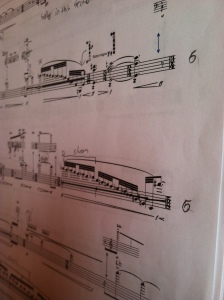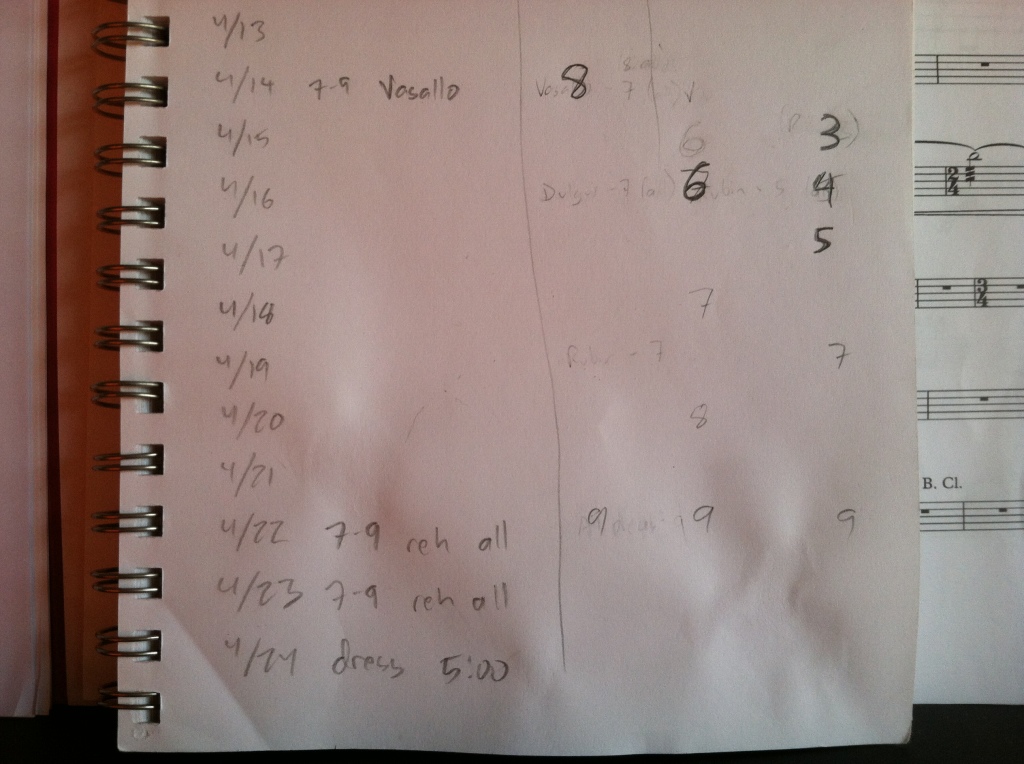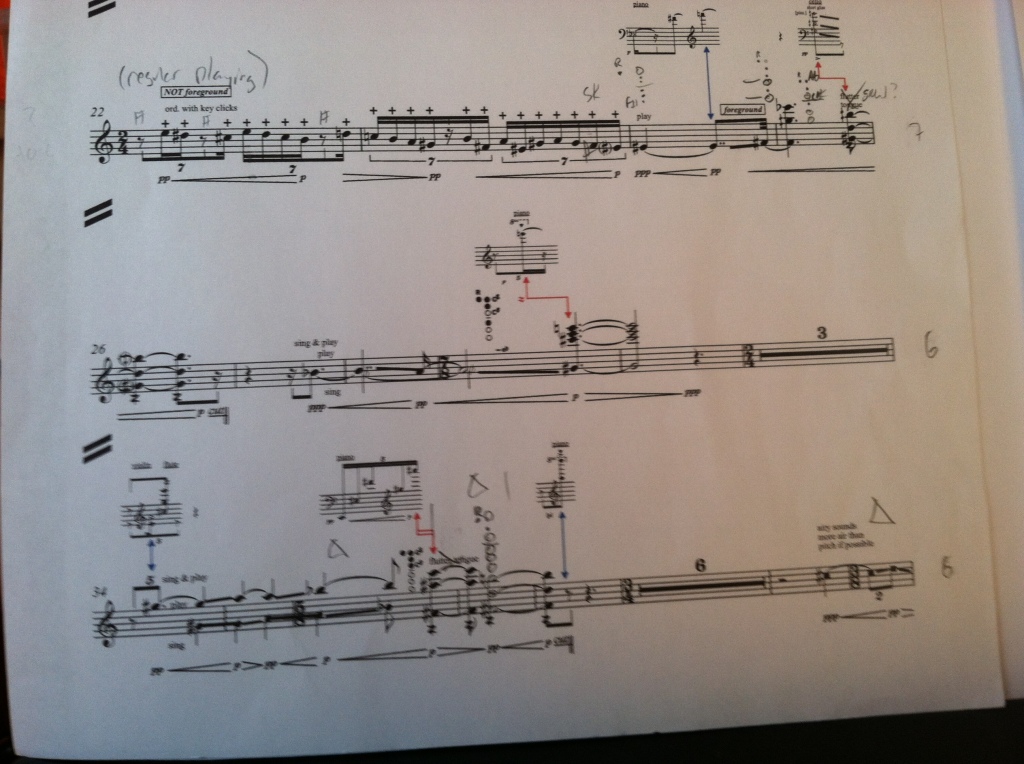As a contemporary music specialist, I am no stranger to parts like this:
This kind of part — with multiple layers of extended techniques, unique notation to decode, rarely encountered fingerings, and rhythmic complexities — can be quite overwhelming. It’s not sight-readable, even at a slow tempo. There’s often no recording available. Questions for the composer arise. Fingering charts need to be consulted. The progress is so slow at first that it can feel discouraging to practice it at all. To top it all off, imagine that you have a young toddler at home and practice time is quite limited. (For me, this is quite easy to imagine!) A couple years ago I started thinking:
How can I more efficiently structure my practice time so that I can learn this complex part by the first rehearsal (or at least, the last)?
That’s when I developed “The Learning Scale”.
The Learning Scale
The Learning Scale is a tool that helps me to make the best use of my time possible, and to keep track of my progress on a piece in a systematic and honest way. Systematic — as in, each page is assigned a number from 1 to 10 based on how well it is learned, and honest — as in, I’m not deluding myself as to how well I can play the piece.
Here’s my basic scale, after refining it over several years:
10 – can’t get it wrong
9 – very low chance of things not going as planned
8 – a few spots still causing trouble at tempo
7 – mostly accurate notes/dynamics/rhythms/etc. a little under tempo
6 – under tempo play through
5/4/3 – roughly learning; still choosing fingerings, asking questions, studying recordings
2 – worked through, first perusal
1 – sight read
0 – not even looked at it
 When I encounter an intimidating piece of music (or any piece of music that I have to learn in a short amount of time), I start by doing my best to sight-read it, and then writing a “1” in the corner of each page — or after each line, depending on the complexity of the music. The next practice session that I work through it, that number moves up to a 2. And so on.
When I encounter an intimidating piece of music (or any piece of music that I have to learn in a short amount of time), I start by doing my best to sight-read it, and then writing a “1” in the corner of each page — or after each line, depending on the complexity of the music. The next practice session that I work through it, that number moves up to a 2. And so on.
I find that by the time I get to “6”, I can usually play through the passage under tempo. Sometimes I can even skip up to 6 or 7 on a page or line after just a few practice sessions. Somehow, no matter how daunting the challenge seems at first, each practice session roughly equates to one number on the learning scale. I don’t know why this is, but it has worked this way for me! As I gain mastery over the material, I start having more time to spend on the really tough sections, so by the time I’m at a “9” I’m really just running those few spots in the piece that are super tricky to get consistent. But I will say, the jump from 9 to 10 is a big one, and rarely do I perform an entire piece that I feel is at a level 10.
Creating a practice schedule using The Learning Scale
As I’ve worked with my system for a while, I’ve started trusting it enough to use it to plan my practice sessions weeks in advance. I usually list out the dates I’ll be able to practice and the rehearsal schedule, then have a column for each piece. I set a goal of where I want to be at the concert or any given rehearsal, and work backwards from there. This lets me set a schedule where I focus on the hardest piece for a few days to really make some progress and bring it up to the level of the other pieces. Or, I can work on the “easier” parts until they’re up to an “8” or so and then put them out of mind for a while.
 However I decide to set my goals, this system has the advantage of specificity and visible progress — the most important things for practice efficiency. Sitting down with only 30 minutes to practice, looking at a daunting piece of music, it’s really helpful to have the specific goal of “getting this passage to a number ‘3’”, especially if getting it to a 3 only means making an honest attempt at working through it, not even necessarily solving everything. The perfectionist in me is placated so that I can put focus where it needs to go. Then, when I achieve my mini-goal and replace the “2” with a “3”, I’ve made visible progress, providing motivation and satisfaction that I’m on the right track to meet my goal of learning the piece (or at least avoiding public embarrassment).
However I decide to set my goals, this system has the advantage of specificity and visible progress — the most important things for practice efficiency. Sitting down with only 30 minutes to practice, looking at a daunting piece of music, it’s really helpful to have the specific goal of “getting this passage to a number ‘3’”, especially if getting it to a 3 only means making an honest attempt at working through it, not even necessarily solving everything. The perfectionist in me is placated so that I can put focus where it needs to go. Then, when I achieve my mini-goal and replace the “2” with a “3”, I’ve made visible progress, providing motivation and satisfaction that I’m on the right track to meet my goal of learning the piece (or at least avoiding public embarrassment).
So that’s my method, and for me it really works. Is it neurotic and obsessive? Yes. But as musicians, for the most part, so are we.


Leave a Reply